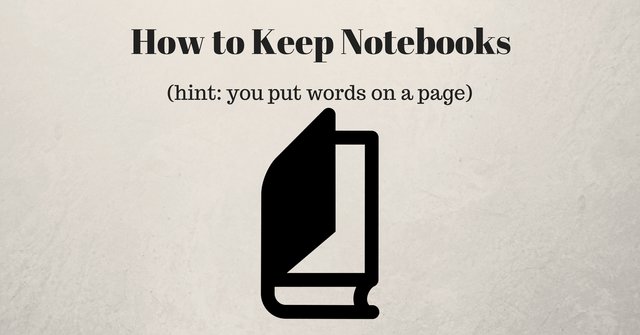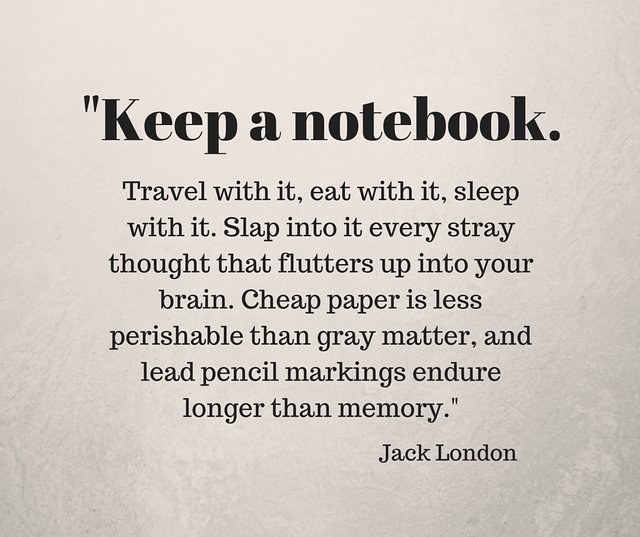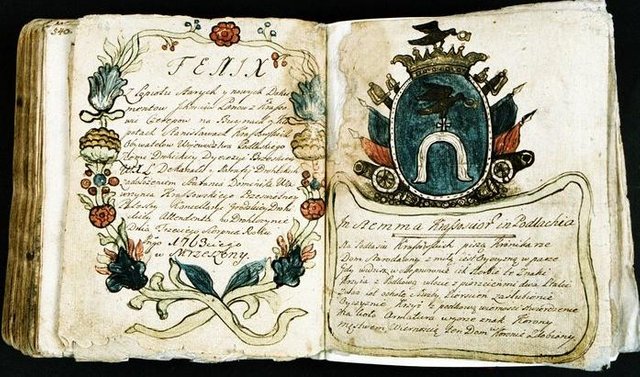Keeping Effective Journals

My apartment is littered with the carcasses of notebooks. Some are full, some half-full, and in a drawer in my desk I keep several pristine books of different sizes awaiting their own ravishing.
If you’re a creative, and you don’t bother with minimalism, you probably have a similar dark corner of your home where blank paper stares at you in expectation. It’s just who we are, and if you’re like me, the white expanses can sometimes raise up a sea of anxiety. And yet you buy more paper.
To “keep” a journal sounds almost domestic, like keeping up appearances. The idea of housekeeping comes to mind. The most accurate analogy is to keeping a pet: if you feed your journal, it will reward you with a form of companionship and insight.
So the good news is that you’re right on the cusp of something healthy, a habit that helps your creativity and makes you want to work harder, write more, and experience more vividly. I’ve already written more than 1000 words about the benefits of journaling as a creative, so I won’t go into that here. Instead, I’m going to focus on the ‘how’ rather than the ‘why’ of journaling.
Kinds of Journals
What we think of broadly as ‘journals’ can generally be divided up into at least three categories: diaries, pocket notebooks, and commonplace books. While I recommend that most people simply keep one notebook that serves all of these functions, it’s helpful to understand the differences. Personally, I keep all three separate, but that’s not necessary.
Diaries
This is what we usually think of when discussing journaling. A diary should, by definition, be kept daily. While the “dear diary” stigma exists in television (often bookending the main character’s misadventures asking her crush to Sadie Hawkins), the reality is you can discuss your actions, emotions, and experiences on a daily basis without resorting to cliches. Unless, of course, you feel the cliches are appropriate.
Some people suggest writing your diary at the same time and place each day. If this works for you, great, and this method is conducive to ritualizing your morning or evening journaling as Michael Balchan describes, focusing on a series of questions and prompts about what you expect and look forward to that day (morning) and reflections on successes and disappointment of that day (evening).
This is not how I write my diary. Instead, I carry mine with me to work, language tutoring sessions, cafes, and any time I know I will be alone for a while. I update it like an oversharing Facebook feed: what I’m doing, how I’m feeling, what I’m thinking about. My rule is, any time I write in my diary, I need to write at least a paragraph about one topic, rather than darting all over the place. I try to connect events together, discussing what I’m doing now as a response to something that happened before, or that will happen later. I divide entries with a bullet point beneath that day’s date. The next day, I skip a line, write the date, and start over.
The important thing is that you pay attention to what is happening in your life. Put it in a context that anyone reading would be able to understand, because you never know what you will and won’t remember.
Pocket Notebooks
For creatives, this is the really good stuff. If you take nothing else away from this article, take away this Jack London quote: “Keep a notebook. Travel with it, eat with it, sleep with it. Slap into it every stray thought that flutters up into your brain. Cheap paper is less perishable than gray matter, and lead pencil markings endure longer than memory.”

Pocket notebooks are exactly that: memo books you carry around with you everywhere, and I do mean everywhere. It’s part of my daily carry, under my phone in my right pocket. When I sit down, I take both out and place them on the table, even at a restaurant or bar. I also keep a small fountain pen with me, so it takes maybe ten seconds to write down anything I think, see, or hear that is worth writing down. And if you’ve been paying attention, almost everything is worth writing down.
- snippets of conversations you have or overhear
- reminders of things you need or want to do later
- descriptions of things you see
- ideas for articles or stories
- lists, of every kind
- names of people you’ve just met (Note: This is not embarrassing at all. People always seem genuinely flattered that you care enough to write down their name, even though you’re implicitly admitting that you won’t remember it.)
- job leads
- errant cool sentences and phrases floating in your head
- the name of that wine you’re drinking
- anything else that makes you think, “oh, I hope I don’t forget this”
Really, this list could go on forever. I go through one such pocketbook every 4-5 weeks. My pocket notebook has a simple descriptive taxonomy: star for new idea, indented box for to-do item, quote for disembodied line, and bullet point for everything else.
Commonplace Book
I’ll let Ryan Holiday summarize: “A commonplace book is a central resource or depository for ideas, quotes, anecdotes, observations and information you come across during your life and didactic pursuits. The purpose of the book is to record and organize these gems for later use in your life, in your business, in your writing, speaking or whatever it is that you do.”
A commonplace book is a bit different from a pocket notebook in that it is primarily composed of stuff you found outside your own head. My commonplace book, which is actually less of a book and more of an Evernote file, has pieces of stories I liked, clever language, storytelling insights, and pieces of articles I want to return to later. Many writers would group this with their pocket notebook, which is fine, but I prefer to keep them separate because combining them would ruin the taxonomy of my pocket notebook, and besides, some of the passages I copy out of books I read are hundreds of words long. Do you really want that taking up valuable pocket real estate? But I digress.
I like to imagine my commonplace book like a silva rerum, literally “forest of things” in Latin. These were books kept by wealthy Polish families detailing generations’ worth of stories, recipes, history, biography, and the like. A commonplace book functions much this way with reading material.
As I mentioned before, keeping several different notebooks is an advanced maneuver, likely to make you give up the habit before it really sticks and starts making itself useful. It’s far easier (and perhaps more efficient) to carry one notebook around that serves several functions, but then you would miss out on the fetishistic pleasures of opening several different notebooks a day. Or maybe that’s not your fetish, you weirdo.
What to write?
I’m not going to waste your time with a million writing prompts here. You’re writing a journal, not fanfiction. Just ask yourself these questions and answer honestly and thoughtfully.
Diary
What has has been going on with you? How are you reacting to it? Why is it happening? What effect will it have? What part of it do you love, hate, or fear? What are you thinking about? What problems are you working on?
Pocket Notebook
What can I see, hear, smell, taste, or feel right now that is interesting? What is something I don’t want to forget? What is that cute girl’s name?
Commonplace Book
What are you reading? What do you like about it? Are there any specific passages that you underlined, noticed, or turned back to read again? Any stories or lessons in the book that you want to save for later, in case you can use them for some other creative work?
My Setup
This is gratuitous hypergraphic notebook porn, and I apologize for the narcissism.
- My diary is kept inside my Midori Traveler’s Notebook along with my food log (don’t ask) and a small craft folder for holding business cards, stationery, loose notes, stickers, and the like.
- My pocket notebook is a 3.5″ x 5.5″ Moleskine Cahier, although any small notebook could serve the same purpose. I bought twelve of these a year or two ago, and have not quite run out yet. Soon, I’ll probably make the jump to Field Notes instead.
- My commonplace book is actually just a digital ‘notebook’ on Evernote, which has the advantage of being infinitely indexable, searchable, and taggable.
Other notebooks:
- The aforementioned food log
- a book of lists, based on Moorea Seal’s 52 Lists Project
- a word journal, for when I come across an interesting word I didn’t know
- a book where I periodically track my daily expenses (just writing the numbers in red is enough to deter me from spending money I don’t have)
- a notebook for writing short stories in longhand, which I sometimes prefer
- a notebook for studying Chinese (I live in Shanghai)
- a notebook for studying German (I may end up moving to Germany)
- a book of morning pages (although I usually just type these)
- several sketchbooks, which are mostly empty because I suck

I also want to write like you....I am trying hard, but still it is hard enough....Even learning English at this level was not easy for me,from where I belong.I hope, I could give perfection to my stories one day!
Hey @saun, your English looks good to me. What's your native language?
Thanks for your motivation sir,my native language is hindi.I am from India,a little far from you.
Not as far as you might think. I'm located in Shanghai, China.
I know, I read your first post at my very first day that inspired me a lot.In India I am from Bihar.
Congratulations @wrychime! You have completed some achievement on Steemit and have been rewarded with new badge(s) :
Click on any badge to view your Board of Honor.
To support your work, I also upvoted your post!
For more information about SteemitBoard, click here
If you no longer want to receive notifications, reply to this comment with the word
STOPDo not miss the last announcement from @steemitboard!